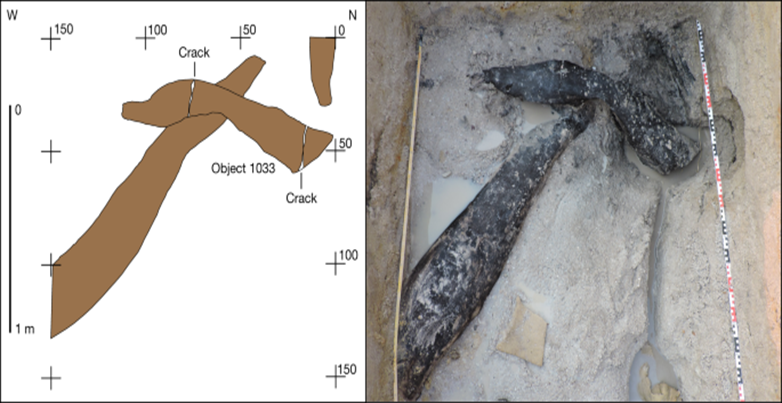The discovery of an archaeological structure indicating human technology 476 thousand years ago

The discovery of an archaeological structure indicating human technology 476 thousand years ago
Recent research at Kalambo Falls has revealed that nearly half a million years ago, ancient human ancestors were already engaged in advanced woodworking.
The artifacts found indicate that these humans were building structures and dwellings, much earlier than previously thought.

A team from the University of Liverpool and Aberystwyth University has excavated preserved wood at Kalambo Falls in Zambia, dating back 476,000 years.
By analyzing stone tool cut marks on wood, the team concluded that these early humans combined wooden cuts to carry out advanced industries.
Before this discovery, it was thought that humans only used wood for simpler purposes such as making fires, making digging sticks, and crafting spears.

Wood usually erodes over the ages and disappears, but at Kalambo Falls, rising water levels have protected and preserved these ancient wooden structures.
Professor Larry Parham, from the University of Liverpool, explained the importance of this discovery, saying: “Humans used their intelligence, imagination and skills to create something that they had never seen before, and that did not exist.”

Aberystwyth University used fluorescence dating techniques, focusing on the last time the surrounding sand minerals were exposed to sunlight. The method expands the boundaries of dating techniques, giving greater insight into human evolution than ever before, according to a study published in the scientific journal SciTech Daily.
Professor Jeff Dowler highlighted the importance of this, noting that although Kalambo Falls was excavated in the 1960s, the lack of advanced dating techniques at the time obscured the importance of the site.
Due to its archaeological importance, Kalambo Falls is a UNESCO World Heritage Site and this research, as part of the pioneering Deep Roots of Humanity project, seeks to understand the development of human technology during the Stone Age.
Source: websites

